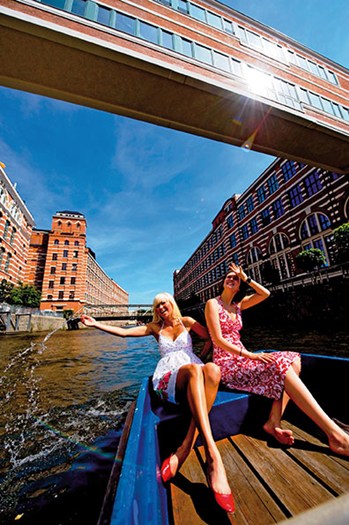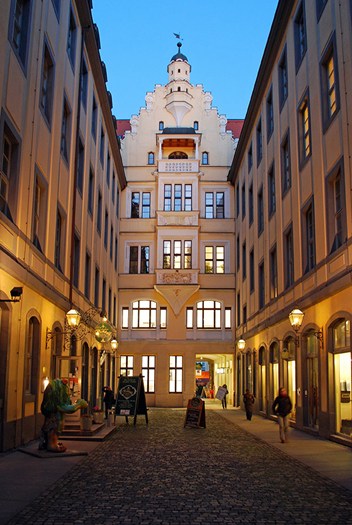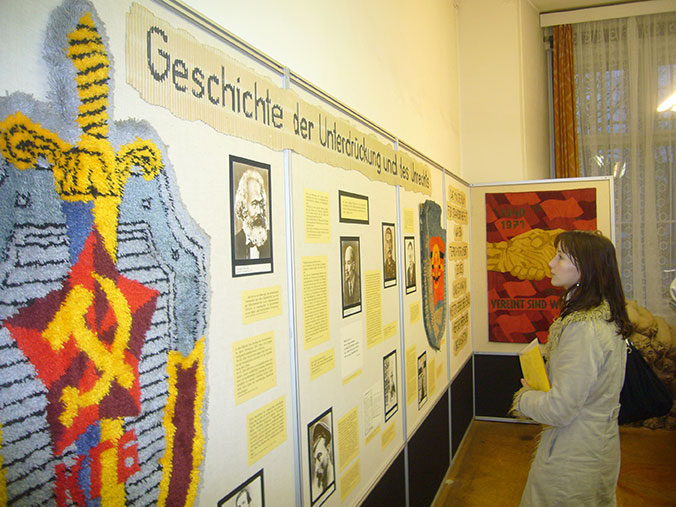LEIPZIG, GERMANY - It’s a bright afternoon, and I’m nursing a warm cappuccino at a café in Old Leipzig’s pedestrian-friendly heart. In this quiet setting, it’s hard to believe that just across the plaza, in St. Nicholas Church, a movement began 25 years ago that would bring German communism to its knees.
Monday “peace prayer” groups had long been meeting in the pretty, white-columned church. Just a dozen-odd people at first, but word spread, and crowds grew until, overflowing the church, they spilled out onto the streets. By Oct. 9, 1989, they numbered 70,000.
“Wir sind das volk!” they chanted (“We are the people!”). Like rotten fruit, the 40-year-old East German Democratic Republic and its communist system fell. Today, the Great Candle Revolution is marked each October 9 by a Festival of Light — 200,000 attended its 25th anniversary in 2014.
A graceful white column topped with green palm fronds heralds the church where this “peaceful revolution” took root.
So what did the people who lived here at the time do on the day they woke up and realized they were free?


Left: Leipzig is a playful city. Right: It's Old Town streets are charming.
“When communism ended,” the manager of a 16th century beer cellar tells me, “I realized I could travel. So I went to London, home of my idols, the Sex Pistols.”
Leipzig has a rich musical history which predates the punk scene by several centuries. A new “Music Trail” leads visitors to places associated with Germany’s classical giants: Johann Sebastian Bach was choirmaster at St. Thomas Church (1723-1750) and premiered his “St. John’s Passion” at St. Nicholas Church on Good Friday, 1724.
Felix Mendelssohn’s house still brings joy to music lovers with its Sunday concerts. Clara and Robert Schumann, Richard Wagner, Georg Philipp Telemann all called Leipzig home.
A city of 543,000 in Saxony, about 150 kilometres south of Berlin, Leipzig offers visitors an astonishing mix: a stellar artistic heritage and a still-fresh triumph over communism.
For Cold War buffs, Leipzig is catnip. As the regime entered its death throes, citizens rushed the headquarters of the STASI, the hated secret police, in the Runde Ecke (Round Building), catching officials in the act of destroying the files they kept on nearly everyone. Seizing the headquarters, townsfolk claimed its contents for posterity.
Today the building is a museum, displaying those same torn dossiers, along with bundles of files, tapes of conversations and near-comic disguises. What looks like a miniature cement-mixer producing globs of mortar turns out to be the main file-destroying device.
Ordinary Germans were the main targets of the state spy agency. A tour guide tells me she investigated (as so many have done) the secret police files on her. One existed on her because she spoke English, another because a man whose advances she’d spurned had decided to “inform” on her. Among the disguises are fake moustaches, wigs, make-up — even a fake belly with a hole for the navel through which photos could be snapped.
Glass jars fill another case, each containing pieces of felt swiped after a suspect had sat down or touched something, so that tracker dogs could identify the scent should the suspect decide to flee. Much scarier than the B-movie spy craft are the narrow interrogation cells where prisoners were tortured or shot.
Little wonder that in today’s Leipzig, lies are simply not on the menu. In pedestrian Old Town, a sculptural frieze shows a group of town fathers under communism: each figure squirms, looks away, down, anywhere but straight ahead.
“Germany started World War II,” reads the first sentence in the Museum of Contemporary History, a window onto life under communism. Uprisings occurred and were brutally suppressed; underground leaders were jailed, executed.
Major exhibits — especially fascinating to locals locked behind the Iron Curtain — showcase shoddy East Bloc consumer goods, the highlight being an iconic “Trabi” (Trabant) automobile, a “luxury” item that took years of waiting to acquire.

Above: This museum details the rise and fall of communism in Leipzig.
How much has changed in the 25 years since communism ended here? For starters, owning a Trabi has acquired a certain cachet. Colourful shops line the once-grey streets; restored “Innerhof” (inner courtyards), remind us of Leipzig’s 17th and 19th century trading heyday; they have been transformed into chic spots to where people meet, shop and dine.
Unable to speak freely for more than 40 years, Germans in the former East now talk all the time — lively debates fill the air of restaurants, clubs and bars.
The uneasiness and distrust felt when Germany was reunited took time to mend, but it has mended.
A recent Wall Street Journal story heralds Leipzig’s new automobile plants — luxury Porsches and sporty electric BMWs — as examples of its growing economy. With low rents and funky student bars, says the WSJ, Leipzig is “verging on hip.”
With a student population of almost 30,000 (Leipzig University dates from 1409), an opera house and a modern zoo, Leipzig has also been named “the most liveable city in Europe.”
Leipzig University graduates include Johann Wolfgang von Goethe, Gottfried Wilhelm von Leibniz, Friedrich Nietzsche and current German Chancellor, Angela Merkel. In the 18th century, all-round genius Goethe studied law here, hanging out at Auerbachs Keller, a 15th century beer cellar and bistro that’s still going strong.
The food in this city is excellent, the beer (5,000 choices) a delight and the mood youthful. At night, folks sit outside (overhead heaters dispel the chill), sipping coffee, drinking beer, eating chunky fries with mayonnaise. Techno-rock pulses out of trendy bars that happily share old streets with distinguished venues like Coffe Baum, a glorious period piece from 1690, with its own third floor coffee museum.
Having flung open the iron curtain, Leipzig “volk” are more than ready for the world stage.
Information
Air Canada and Lufthansa offer daily service to Leipzig via Frankfurt / The best tool for visitors planning to go to Germany:
www.germany.travel